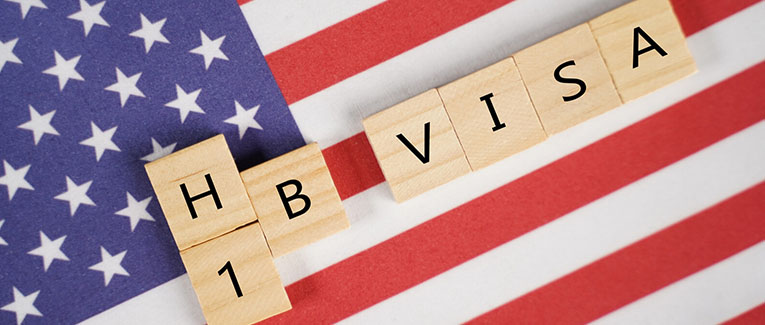
Every year, 85,000 new H-1B visas are available, of which 65,000 visas are for overseas workers in specialized professions. The remaining are for specialized foreign professionals with an advanced degree from a U.S. institution.
The H-1B visa is the best way to obtain a green card because it is a dual visa status. It allows the holder to apply for a green card without affecting H-1B status. The visa also increases the visa holder’s chances of becoming a U.S. citizen eventually.
Indians are the largest proportion of H-1B visa holders in the U.S., especially among tech professionals.
Obtaining H-1B visas, however, is not easy for many companies. Members of the technology industry have even lobbied Congress to limit the requirements and reduce the H-1B visa holder’s wages. However, U.S. President Donald Trump ordered a review of the H-1B visa program in 2018-19. The order prompted the Department of Homeland Security to tighten the visa rules.
The USCIS rule, “Strengthening the H-1B Nonimmigrant Visa Classification Program” (H-1B Rule), restricts specialty occupations. The restriction has U.S. companies in a bind, as it will be difficult for them to convince immigration agencies of the absence of talent in the local job market.
Limits H-1B Professions
The updated rules redefine the specialized professions. As per the new regulations, the H-1B role must correlate with the required degree field. The rule, apart from software developers, also affects international students who stay in the U.S. as OPT workers and graduate to H-1B visas.
Arts & Business Degrees Scoped
Unspecialized degrees in business or liberal arts are no longer valid for H-1B roles.
Reduces Visa Validity
The rules also reduce the validity of H-1B visas to one year for workers employed in third-party workplaces. The rule strengthens the enforcement by regulating companies that do not follow H-1B rules or cooperate with on-site visits.
Increase In H-1B Minimum Wage Requirement
The Department of Labor’s new rule increases the minimum wage requirements for H-1B visa applications. The workers should be paid on par with other employees with similar qualifications.
Cannot Change Companies
If you are currently in H-1B status with a company, you cannot work for a new employer on the same visa.
When an H-1B worker receives a new American job offer, he or she can work with the new employers only after that company has submitted the new H-1B petition.
U.S. Citizenship and Immigration Services (USCIS) recommends you to submit your job application to your new H-1B employer at least three months before the end of the current job. Failure to do so can render you jobless during the transition period.
Bringing Dependents
H-1B visa holders can bring their spouse and children under 21 years of age to the U.S. on H-4 visas as dependents. The validity of the H-4 visa is pinned to the expiry of the H-1B visa.
The H-1B rules generally prohibit H-4 visa holders from working. The H-4 visa holder can obtain a driver’s license, get a bank account, and even enroll in academic courses. The rules do provide exceptions. Your H-4 visa holder can work after applying for an Employee Authorization Document .
Moving Forward
A slew of suits has been filed against the new visa rules, including by a group of universities. A lot depends on the results of these court cases. Do note that the top 10 U.S. companies have been the beneficiaries of the most H-1B visas, and their lobbying efforts are expected to see some results favoring H-1B visas. Even media houses like Bloomberg have been critical of the new rules.
Meanwhile, Joe Biden’s presidency is also widely expected to reverse the current immigration laws.
Let’s see.

